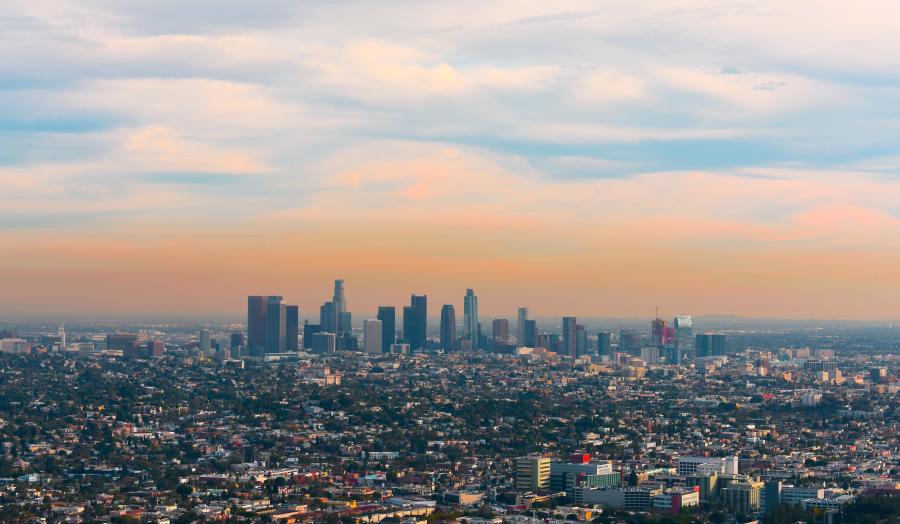Understanding Childhood Asthma in Cities
Asthma is a serious health issue around the world. Asthma is a disease where someone frequently has difficulty breathing because the airways in their lungs are inflamed and can close up. In the US, around 6 million children struggle with asthma.(1) An alarming trend is that asthma is more common in cities than in suburban towns.(2) Sure enough, asthma is a common condition here in Bridgeport. A survey of Bridgeport residents found that many adults and children struggled with asthma.(3) Scientists and doctors have worked to understand what causes asthma and why it is more common in cities. This week’s article summarizes the research on asthma in cities and what can be done to fight it.(4)
Research has uncovered a handful of causes of asthma in children living in cities. All of the things that cause asthma are substances that spread through the air. The main causes of asthma in children in cities are pest allergens, secondhand nicotine (from smoking or vaping), nitrogen dioxide (NO2), and air pollution from traffic or energy plants.
Pest allergens are tiny particles floating in the air that usually come from mice and cockroaches. When children breathe in these particles frequently over long periods of time, they can develop asthma. Mice and cockroaches are often more common in cities because there are more hiding places and food sources for them.(5) One is even more likely to find these pests in houses or buildings that are in poor condition. Children that live in houses or go to schools that are in poor condition are more likely to be exposed to pest allergens and develop asthma.
Another common cause of asthma is secondhand nicotine (or secondhand smoke). Secondhand nicotine comes from nicotine that floats around in the air when people vape or smoke tobacco (such as cigarettes, cigars, or pipes). Unfortunately, the vapor or smoke that people exhale still harms other people who breathe it in, even when those other people are not smoking or vaping. The vapor or smoke is sometimes still in the air even when you can’t smell it. Research has found that when children breathe in secondhand nicotine it harms their breathing and causes asthma. Secondhand nicotine in the air may also make asthma inhalers less effective because the nicotine in the air can interfere with the asthma medication.
Other common causes of asthma in cities are nitrogen dioxide (NO2) and air pollution. NO2 comes from burning coal, oil, or natural gas. It can be found in the air outdoors from car and truck exhaust. It is also released indoors if you use a gas stove without proper ventilation. Research has found that NO2 causes asthma. NO2 Is more common in cities due to more traffic and industrial activity where fuel is burned and released into the air.
So what can we do to reduce asthma in children living in cities like Bridgeport? The researchers offer some recommendations at the end of the article. Part of the solution involves fixing houses, schools, and other public buildings that are in disrepair. Fixing these buildings will make it less likely that mice and cockroaches will nest there. Residents should also make sure to take out their trash regularly and not leave trash on their property. It will also help to stop littering, as this can attract mice and cockroaches.(6) Another important step is for adults to stop smoking or vaping around children. This means not smoking or vaping in the household or in public areas like schools or playgrounds where children are. Then there’s reducing NO2. This is a more complicated task because it involves reducing air pollution from traffic and energy plants. However, research has shown that air quality control policies have worked to reduce cases of asthma.(7) At home, ensure that you have good ventilation when using a gas stove. Addressing these causes of asthma in cities will help our children breathe easier.
Definitions
Asthma – Asthma is a condition where the airways that allow people to breathe get inflamed. This inflammation leads the air ways to become swollen, which makes it difficult for people to breathe.
Pest Allergens – Pest allergens are tiny particles that come from animals that float in the air and can irritate some peoples’ lungs.
Nicotine – Nicotine is a chemical that is found in cigarettes, cigars, and vaporizers. Nicotine is addictive.
Nitrogen Dioxide (NO2) – Nitrogen Dioxide is a chemical that is released in the air when fossil fuels are burned. It can be harmful to peoples’ breathing.
Sources
- Lancet, T. (2018). Asthma in US children. Lancet (London, England), 391(10121), 632.
- Milligan, K. L., Matsui, E., & Sharma, H. (2016). Asthma in urban children: epidemiology, environmental risk factors, and the public health domain. Current allergy and asthma reports, 16(4), 1-10.
- Health Improvement Alliance (2022). 2022 Community Health Needs Assessment – Greater Bridgeport. Health Improvement Alliance.
- Grant, T. L., & Wood, R. A. (2022). The influence of urban exposures and residence on childhood asthma. Pediatric Allergy and Immunology, 33(5), e13784.
- Sheehan, W. J., Rangsithienchai, P. A., Wood, R. A., Rivard, D., Chinratanapisit, S., Perzanowski, M. S., ... & Phipatanakul, W. (2010). Pest and allergen exposure and abatement in inner-city asthma: a work group report of the American Academy of Allergy, Asthma & Immunology Indoor Allergy/Air Pollution Committee. Journal of allergy and clinical immunology, 125(3), 575-581.
- Sellner, M., & Wicht, J. (2021, October 8). Residents of 14 million housing units reported seeing roaches, 14.8 million saw rodents in last 12 months. U.S. Census Buruea. Retrieved January 18, 2023, from https://www.census.gov/library/stories/2021/04/how-many-american-homes-…
- Gauderman, W. J., Urman, R., Avol, E., Berhane, K., McConnell, R., Rappaport, E., ... & Gilliland, F. (2015). Association of improved air quality with lung development in children. New England Journal of Medicine, 372, 905-913.

